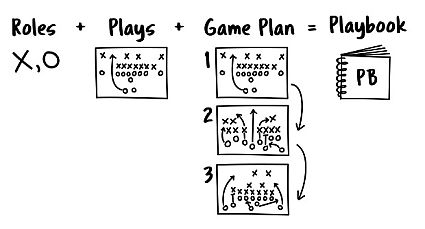This weekend, late evening, I turned on the TV, paging through the channel guide. I realized, 90% of the content is repeats. The same old (often enjoyable) shows, cycling and recycling. Columbo, Monk, endless NCISs, Law and Order, Family Feud, and on and on. Movies that have repeated endlessly–all the James Bond movies, Dumb and Dumber, Fast Times, the Breakfast Club. All entertaining, but designed for very different times and circumstances–yet we keep going back to the same old things.
The world has changed, but we are still doing the stuff we’ve always done–at least in selling. We may have buffed them up a little to make them look shinier, but underneath they are what we have always done.
We engage in linear selling processes–Prospecting, Qualifying, Discovering, Proposing, Closing. We may have “invented” a customer buying process that aligns with our desired process–Defining Problems, Identifying Alternatives, Identifying Needs, Assessing Alternatives, Choosing A Vendor. It hasn’t changed since I started selling, despite all the data showing us customers don’t buy that way. They wander, they commit/decommit/recommit/change, they start/stop, the buying group changes, and 60% of the time they fail to make a decision!
We have our classic, “marketing catches them/sales skins them” approach. Marketing creates awareness/demand, sales qualifies/closes. Yet the customer doesn’t buy that way, they are moving to primarily digital buying channels, the majority preferring rep free experiences.
We still train our people the way we always have, providing them endless product training and sales skills training (prospecting, qualifying, need identification, proposing, objection handling, closing). But we don’t train them to have business conversations that are meaningful to the customer.
We measure our people the way we’ve always measured them–primarily activities(emails, dials, meetings, proposals), 3X pipelines (regardless of the health), and quota attainment. Yet year after year quota attainment plummets, our activities present fewer results, win rates plummet.
We spend millions on tech stacks, but still struggle with CRM compliance.
We declare we are people focused, yet hire what’s available, churning them in 11 months, cycling through the process again.
We promote our best people into front line management roles, yet fail to provide the coaching, training, and development.
We confuse hitting our growth goals/quotas with achieving our potential, most of the time underperforming our potential.
Everything has changed, yet how we sell and manage our business remains the same. We think we have changed by inventing a whole new series of acronyms like ARR, CLV, and so forth, but they are the same concepts we’ve had before.
We continue to use the same playbooks, but those playbooks no longer work.
We need to rethink everything we do in selling, organizing ourselves to recognize the new realities of how customers buy and how we best engage them. The fundamental principles of selling and business apply, but the way we implement them must change if we are to achieve our potential.
We have to reorganize everything we do around a digitally led, sales supported customer engagement process. We need to redefine workflow, roles, responsibilities–recognizing marketing/sales/customer experience are now tightly intertwined. We need to think not in terms of the customer buying journey, but an extended view of inciting customers to search, change, then ultimately buy. We need to recognize the skills we focused on in the past are less relevant to our customers going forward.
We need to recognize that doing more of the same, faster, just accelerates our failure. Instead, we focus on what do we need to do differently.
We need to understand how to apply new technologies, like AI, to free up time to engage customers deeply about how they feel, what they fear, how we can help them understand, build confidence and move forward.
We need to understand, much of buying is fully transactional, needing great/efficient digital experiences, moving sellers out of those roles.
We need to jump on the opportunity VUCA presents to our customers in complex situations, and creating value means first understanding them as human beings, then understanding what they face–and helping them understand. We need to recognize that helping them make sense of what they face, building their confidence in how they move forward is all about them and not what we sell.
We need new playbooks!

Leave a Reply